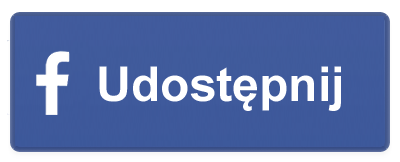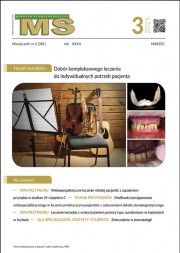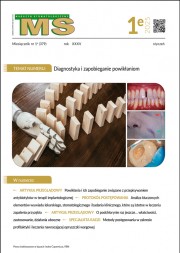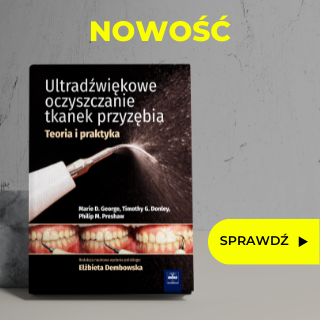Dostęp do tego artykułu jest płatny.
Zapraszamy do zakupu!
Po dokonaniu zakupu artykuł w postaci pliku PDF prześlemy bezpośrednio pod twój adres e-mail.
OPIS PRZYPADKU
Zatrzymany ząb wgłobiony – opis przypadku.
Natalia Kempa, Bożena Soroka-Letkiewicz, Adam Zedler, Paulina Adamska
Impacted invaginated tooth – case report
Praca recenzowana
Piśmiennictwo
- Allareddy V, Caplin J, Markiewicz MR i wsp. Orthodontic and surgical considerations for treating impacted teeth. Oral Maxillofac Surg Clin North Am. 2020; 32(1): 15-26.
- Kaczor-Urbanowicz K, Zadurska M, Czochrowska E. Impacted teeth: An interdisciplinary perspective. Adv Clin Exp Med. 2016; 25(3): 575-585.
- Becker A, Chaushu S. Etiology of maxillary canine impaction: A review. Am J Orthod Dentofacial Orthop. 2015; 148(4): 557-567.
- Ye ZX, Qian WH, Wu YB i wsp. Pathologies associated with the mandibular third molar impaction. Sci Prog. 2021; 104(2): 368504211013247.
- Al-Abdallah M, AlHadidi A, Hammad M i wsp. What factors affect the severity of permanent tooth impaction? BMC Oral Health. 2018; 18(1): 184.
- Nemec M, Garzarolli-Thurnlackh G, Lettner S i wsp. Prevalence and characteristics of and risk factors for impacted teeth with ankylosis and replacement resorption – a retrospective, 3D-radiographic assessment. Prog Orthod. 2024; 25(1): 34.
- Zou R, Qiao Y, Lin Y i wsp. Is it necessary to remove bone-impacted teeth? A retrospective study. J Stomatol Oral Maxillofac Surg. 2023; 124(2): 101304.
- Castelo-Baz P, Gancedo-Gancedo T, Pereira-Lores P i wsp. Conservative management of dens in dente. Aust Endod J. 2023; 49(Suppl 1): 481-487.
- Agarwal NS, Singh S, Chandrasekhar P i wsp. Conservative nonsurgical approach for management of a case of type II dens in dente. Case Rep Dent. 2024; 2024: 8843758.
- Zhu J, Wang X, Fang Y i wsp. An update on the diagnosis and treatment of dens invaginatus. Aust Dent J. 2017; 62(3): 261-275.
- Alves Dos Santos GN, Sousa-Neto MD, Assis HC i wsp. Prevalence and morphological analysis of dens invaginatus in anterior teeth using cone beam computed tomography: A systematic review and meta-analysis. Arch Oral Biol. 2023; 151: 105715.
- Henklein SD, Küchler EC, Proff P i wsp. Prevalence and local causes for retention of primary teeth and the associated delayed permanent tooth eruption. J Orofac Orthop. 2024; 85(Suppl 1): 73-78.
- Naraynsingh CN, Henry K, Hunte R i wsp. Prevalence and pattern of tooth impaction: A radiographic study in a trinidadian population. Niger J Clin Pract. 2024; 27(7): 837-843.
- Sajnani AK, King NM. The sequential hypothesis of impaction of maxillary canine - a hypothesis based on clinical and radiographic findings. J Craniomaxillofac Surg. 2012; 40(8): e375-e385.
- Hegde V, Mujawar A, Shanmugasundaram S i wsp. Prevalence of dens invaginatus and its association with periapical lesions in a Western Indian population – a study using cone-beam computed tomography. Clin Oral Investig. 2022; 26(9): 5875-5883.
- Alkadi M, Almohareb R, Mansour S i wsp. Assessment of dens invaginatus and its characteristics in maxillary anterior teeth using cone-beam computed tomography. Sci Rep. 2021; 11(1): 19727.
- Alani A, Bishop K. Dens invaginatus. Part 1: classification, prevalence and aetiology. Int Endod J. 2008; 41(12): 1123-1136.
- Klein OD, Oberoi S, Huysseune A i wsp. Developmental disorders of the dentition: An update. Am J Med Genet C Semin Med Genet. 2013; 163C(4): 318-332.















